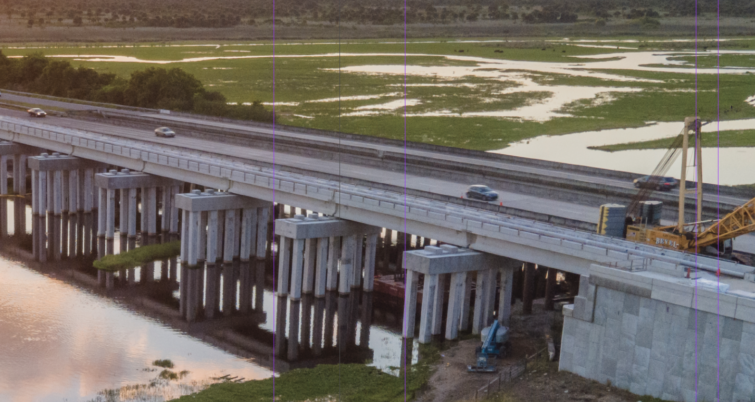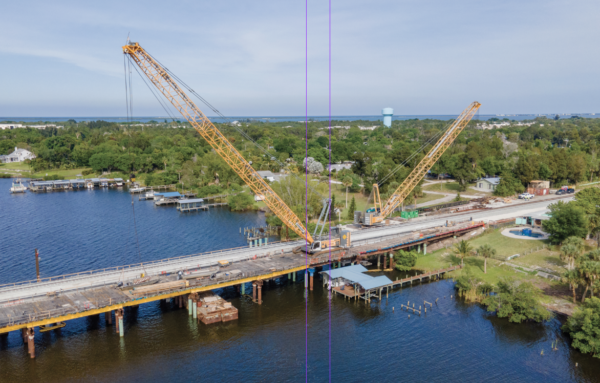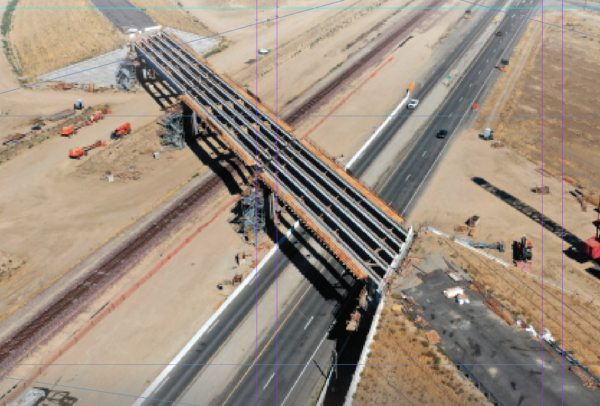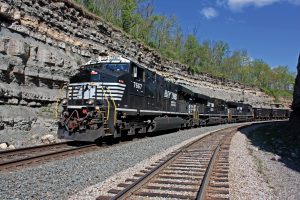Moving at a low speed: Despite all the hoopla about high-speed rail, construction is moving slowly
Written by David C. Lester, Editor-in-Chief
Few rail projects have received as much ink, photographic, and video coverage as those attempting to develop high-speed rail (HSR) in North America.
The challenges of high-speed rail are primarily the high cost of construction and the lack of political will to absorb those costs, along with those who question whether HSR is even worthwhile.
There are three high-speed rail projects underway in the U.S. Brightline is well ahead of the curve in construction and operation. Indeed, it is currently operating between Miami and West Palm Beach with multiple train sets and hourly departures. Moreover, Brightline has completed its line from West Palm Beach to Orlando, and crews are currently making qualifying runs along this route, with regular service scheduled to be either late this year or early 2023. The line connecting Orlando to Tampa also is in the planning phases.
At this point, Brightline is a “higher-speed” system, as its trains approach 80 mph along portions of the Florida East Coast right-of-way it uses. Technically, HSR is considered by most to be 200+ mph. However, when the railroad opens its own West Palm Beach-to-Orlando segment, trains will operate at 125 mph in some areas, blurring the line between high-speed and higher-speed rail.
The second big U.S. HSR project is run by the California High-Speed Rail Authority (CHSRA), with a genuinely high-speed line between San Francisco and Los Angeles currently under construction.
Finally, there is Texas Central, with plans for an HSR line between Dallas and Houston. However, construction has not gotten off the ground due to various problems, including the recent resignation of its CEO and a court battle over the question of eminent domain.
This discussion will dive deeper into the current construction status on all of these lines and what the future may hold.
Brightline
Brightline has been working on the Orlando extension since 2019, and it is nearly 100% complete. Crews are working through qualifying runs on the line between West Palm Beach and Orlando. In addition to the railroad, Brightline began building the Orlando station in January 2022, with expected completion in November. In addition, a vehicle maintenance facility will begin operating in Orlando
in November.

A significant part of Brightline construction includes upgrading grade crossings with state-of-the-art safety and warning equipment. For example, there are 156 rail-highway grade crossings between West Palm Beach and Cocoa. At this point, work on 122 of those crossings is complete.
Other construction milestones in 2022 include the substantial completion of the airport corridor and the installation of a new bascule span on the Loxahatchee River bridge. Despite the normal challenges of a major construction project like Brightline, the railroad has made steady progress over the past few years, even during a pandemic.
California High-Speed Rail Authority
The most ambitious high-speed rail project in the U.S. is a line between Los Angeles and San Francisco. This project has been fraught with political and economic challenges, but construction has moved forward at a reasonable rate for a project of this size.
Funding has been a significant issue for the project. However, Kyle Simerly of the CHSRA told RT&S, “infrastructure projects like these are never fully funded from the start. That’s why we must complete what we have in funding for now and continue in this building-block approach as funding becomes available. We continue to progress and diligently work at the state and federal level to receive additional funding.”
CHSRA met the engineering challenges during construction to this point, but there are more to deal with in the future. Simerly pointed out that “it was mandated we start in the Central Valley when we did by the federal government in their 2008 American Recovery and Reinvestment Act (ARRA) seed money for initiating the project, because of the Valley being historically disadvantaged, reeling from the recession, and hosting some of the worst air quality in the nation. We’ve openly reported that, as a result, we have proceeded with our current construction contracts out of sequence with, and in advance of, other elements such as right-of-way acquisition and utility relocations assessments, which have created challenges. We are currently working through the associated challenges and implementing procedures to mitigate the risk of reoccurrence on future contracts. One mitigation we have implemented is a Staged Project Delivery process.”
Regarding recent project accomplishments, Simerly told RT&S:
As of the June 2022 Central Valley Status Report, CHSRA has over 90% of the parcels in hand for the current 119 miles under construction;
In early July, the final precast girder in Construction Package 4 was placed. Package 4 is a 22-mile segment of the 119 miles under construction; and
The last two years have been the most productive in the program’s history. Construction Package 4 will be the first construction package to complete in Q2 2023.

Given the tremendous work remaining to complete the project, Simerly said significant engineering challenges are ahead. For example, “the line will require tunnels through three main areas of the state: the Pacheco Pass in the north, and the Tehachapi Mountains and San Gabriel Mountains in the south.”
He added, “tunneling sections are challenging elements of the high-speed rail system, so our engineers draw upon state, national, and international expertise in designing and constructing our tunnels. We are receiving advice from technical advisers that are experts in seismic, geotechnical, tunnel design and construction, and seismic design. The Authority has a Seismic Advisory Board that supports the development of our seismic design criteria that we will use for tunnel design. We also have a Technical Advisory Panel comprised of international technical experts who review and provide input on our design criteria.
“The Authority will proceed with advanced design, geotechnical investigations, and tunneling once the project sections receive environmental clearance and funding is available.
“Design for tunnels and structures will adhere to the Authority’s design criteria and all state and federal codes and standards for both an operating basis earthquake and a maximum considered earthquake. Our seismic performance criteria require that a tunnel not only survive an earthquake but provide for the safe evacuation of passengers and personnel.
“Safety is the high-speed rail top priority. In addition to the above, the Authority also will employ other safety measures such as Automatic Train Control and an Early Earthquake Warning System that will result in a seismically safe, reliable system, not at risk from the San Andreas and other major fault lines.”
While supply chain issues have impacted many businesses, projects, and consumers over the past year, CHSRA said these have not had a tremendous impact on the forward progress of its construction.
The pandemic, however, did require modifications to the construction plans. Simerly said, “The Authority has nimbly adapted to the dynamic and unpredictable effects by increasing telework and virtual meetings and coordinating with our contractors and labor groups to implement safety standards to protect essential workers while they advanced the construction work. But the pandemic still resulted in some challenges, requiring schedule adjustments. One of the effects was a one-year delay of our 2020 Business Plan. We granted extensions of several comment periods for environmental documents.”
The CHSRA project also funds other activities that will tie in with high-speed rail. For example, Simerly told RT&S, “Outside the 119 miles, we are also substantial funders of coordinated initial investments in ‘bookend projects’ like Caltrain electrification and the Los Angeles Union Station renovation LinkUS project, as well as working in cooperation with Los Angeles Metro to break ground last month on the Rosecrans and Marquardt grade separation, a heavily trafficked crossing utilized by the Pacific Surfliner among many other services. The Authority supports more train service all over the state. High-speed rail is not just about this system but how it integrates into California’s existing and future transit and rail systems.”
Simerly added, “relatedly, we’re also advancing beyond the 119 miles to a full 171-mile initial system between Merced and Bakersfield. Advance design contracts are up for consideration at the August board of directors meeting for the extensions Madera to Merced and Poplar to Bakersfield.” Environmental clearance is complete for 400 miles of the 500-mile CHSRA project.
With such a large project, different line sections will be in very different stages of approval and construction. For example, while much construction is complete in the Central Valley, environmental clearance is still required for 100 miles of the line. Funding will continue to be challenging, and the entire project will be an uphill battle until it is finished and operating. The success of the project will continue to depend on the willingness of taxpayers and Congress to provide funding and be committed to the notion that high-speed rail is an excellent alternative to automobiles and jet aircraft, which continue to dump greenhouse gases in the Earth’s atmosphere.
Texas Central
Unfortunately, the Texas Central Railroad project faces significant financial and legal challenges, and no construction has begun on this proposed high-speed line. Texas Central seeks to provide high-speed rail service (200+ mph) between Dallas and Houston using technology based on the Japanese bullet trains.
Texas Central plans to partner with the Central Japan Rail Company for knowledge transfer and long-term and continuous technical support and process improvement of the rail system. This seems like a wise choice, as Japan has been operating Shinkansen bullet trains for decades and with great success.
Texas Central recently won a court case where a landowner challenged the eminent domain of the rail company to build a line on specific parcels of property. This is the only real good news the company has had in a while. Earlier this year, the press revealed that the company owed roughly $600,000 in unpaid taxes, and the CEO resigned, leaving the railroad without a skipper.
While potential ridership surveys suggest a high-speed rail market between Houston and Texas, we’ll have to wait and see what happens.
Read more articles about track construction.





